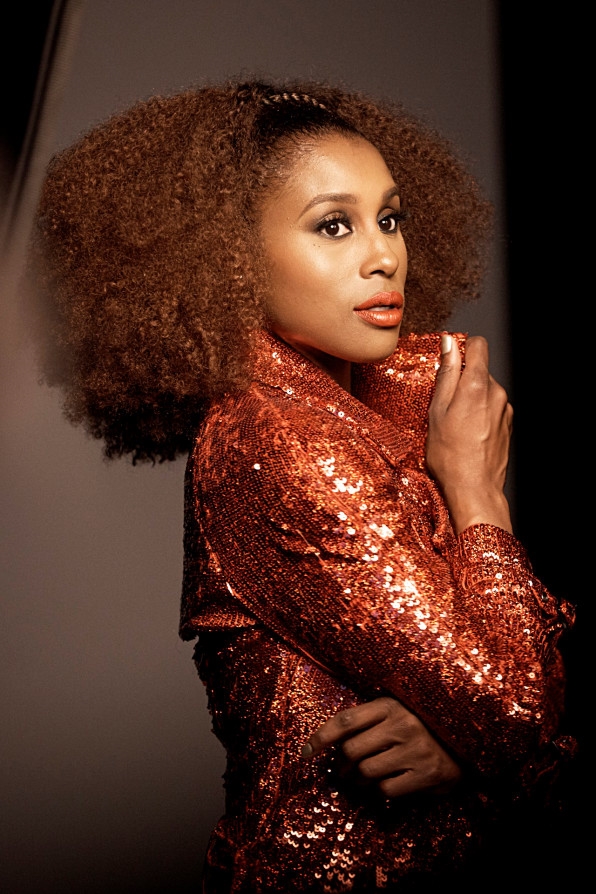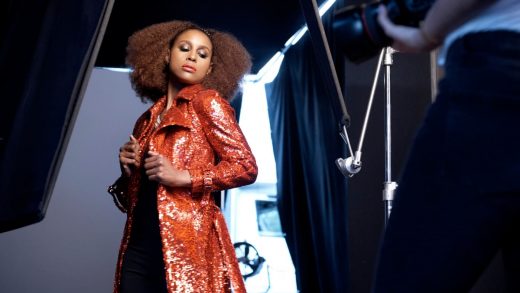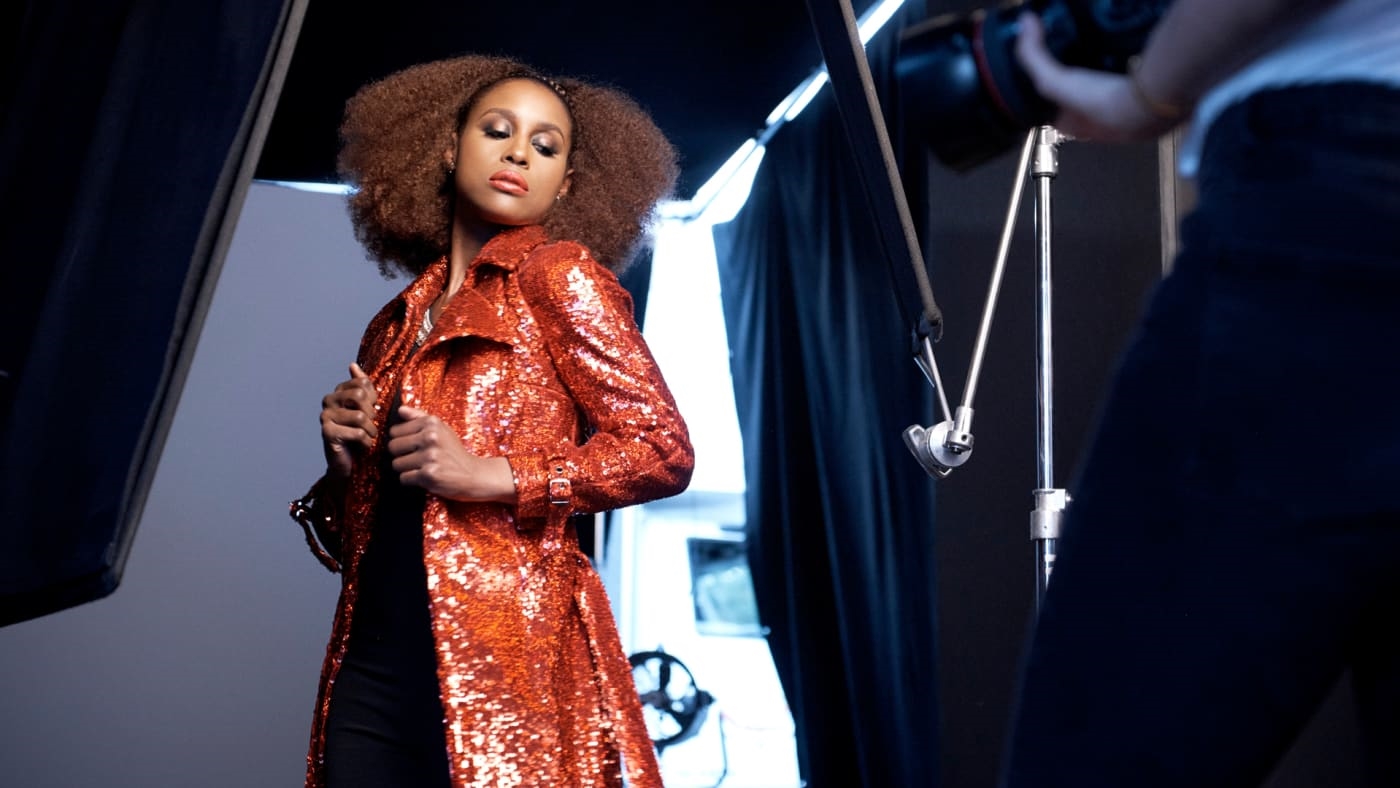Issa Rae’s new ad continues Covergirl’s search for new femininity
Issa Rae, riding shotgun with her three best friends on the way to a night out, watches one of her crew putting on lipstick in the backseat.
“Oh you trying to scare everybody off?”
“If you can’t handle black lipstick, you can’t handle me, baby.”
It’s not a scene from the upcoming third season of HBO’s Insecure, but Rae’s newest ad for Covergirl. It may be a spot for the brand’s new 48-shade Exhibitionist lipstick collection, but the award-winning actor, writer, and director is actually in a car with her three actual best friends. It’s a detail that Covergirl global CMO Ukonwa Ojo says is fundamental to the brand.
“We want to show what it’s like getting ready in the car to go out,” says Ojo. “We asked her if she’d like to do it, and Issa and her girlfriends loved the idea. We shot this thing, and they’re acting like they would act, and that context is so important, real, and inspiring. It’s also attainable. These are real women, and if they can do it, so can you.”
The new ad is the brand’s latest extension of its “I Am What I Make Up” campaign, created with agency Droga5 and launched last fall, designed to challenge traditional views of beauty, beauty advertising, and what it means to be a woman. That may sound a bit rich coming from a brand that since 1961 has helped establish the very beauty norms it’s now trying to subvert, but since Ojo took over Covergirl at Coty last year, she’s steered its image in an increasingly progressive direction.
“Covergirl is an icon and any statement we make on beauty is really a statement in culture,” Ojo said during a Cannes Lions panel in June. “So one of the hardest jobs are these decisions of who will be the next Covergirl, because we know we’re making a statement in culture of what beauty looks like. Our challenge every year is asking ourselves how we can expand that definition.”

There are three major categories Covergirl looks at when making that decision: Ethnic diversity, age diversity, and vocational diversity. All three were apparent in the campaign’s launch ad, featuring Rae, as well as personal trainer Massy Arias; 69-year-old model and dietician (and Elon’s mom) Maye Musk; and professional motorcycle racer Shelina Moreda.
Droga5 group strategy director Katy Alonzo says the new Issa Rae ad addresses a truth about beauty that the category has largely ignored–that women don’t use makeup exclusively to look good for men. It’s about self-confidence, self-image, and in this case, a social ritual with your friends. “Women engage with beauty not only for themselves but also with each other, and how as women it’s such a fun and natural way we relate to each other,” says Alonzo. “These are such simple, human ideas about women that most women can relate to, and yet they’ve never been really told in beauty advertising.”
It’s also funny. Quick: Name the funniest beauty ad you’ve ever seen. [We’ll wait.] Yes, intentionally funny.
Exactly.
“Traditionally, when you look at the category, one thing you’ll notice is people are often in front of a white background or some generic skyline. That implies that beauty doesn’t play a meaningful role in women’s lives,” says Alonzo. “The idea that beauty does in fact play a meaningful role in women’s lives is at the heart of this campaign. So the context is important, and when you look at Issa Rae here, she’s in a car being funny. And it’s this idea that makeup has a role that’s not only meaningful but it’s fun, it’s social, and something women bond over.”
So much of the narrow cultural views depicted in advertising is done under the guise of aspiration. Not a reflection of society, but a look at what people want. Or should want. But do they? The answer for Ojo, Alonzo, and Rae is that it’s much more complicated than that, and they’re working to expand the very idea of aspiration through whom they choose to work with, and how they’re being portrayed.
“I identified as a tomboy growing up, dark skin, black woman with natural hair, I didn’t really fit into the traditional, classically beautiful definition,” Rae said on stage at Cannes Lions. “So to be approached by these women to sell products with my face, it just felt like a huge compliment. But also thinking about who would be watching, and being able to see someone who looks like me. Specifically, I’m thinking of young girls who don’t feel traditionally beautiful or feminine, but can see some of themselves represented.”
For Ojo, it’s also important that this approach to representation goes beyond marketing and into the products themselves. Makeup brands typically launch products with a narrow selection of shades, then expand that offering over time. That format was flipped on its head last year with the success of Rihanna’s Fenty Beauty line launch last September, with 40 shades of its own foundation forcing other legacy beauty brands to play catch up. Earlier this month, Covergirl launched its own new line of foundation in 40 shades all at once, but Ojo credits her customers over The Fenty Effect.
“First we have a very diverse team and feel that we should make sure everyone’s represented when we launch a new product,” says Ojo. “But second, we paid attention to how it makes people feel when a new product comes out, and the brand chose not to have your shade until six months or a year later. That may not show up in a trend report, but there is an emotional connection that happens when you hear it first hand.”
The 13-minute Trublend Matte Made launch ad was one-minute of ad, and 12 minutes of the brand thanking hundreds of people who asked for a wider range of makeup that matched their skin tones, by name.
Fast Company , Read Full Story
(6)



